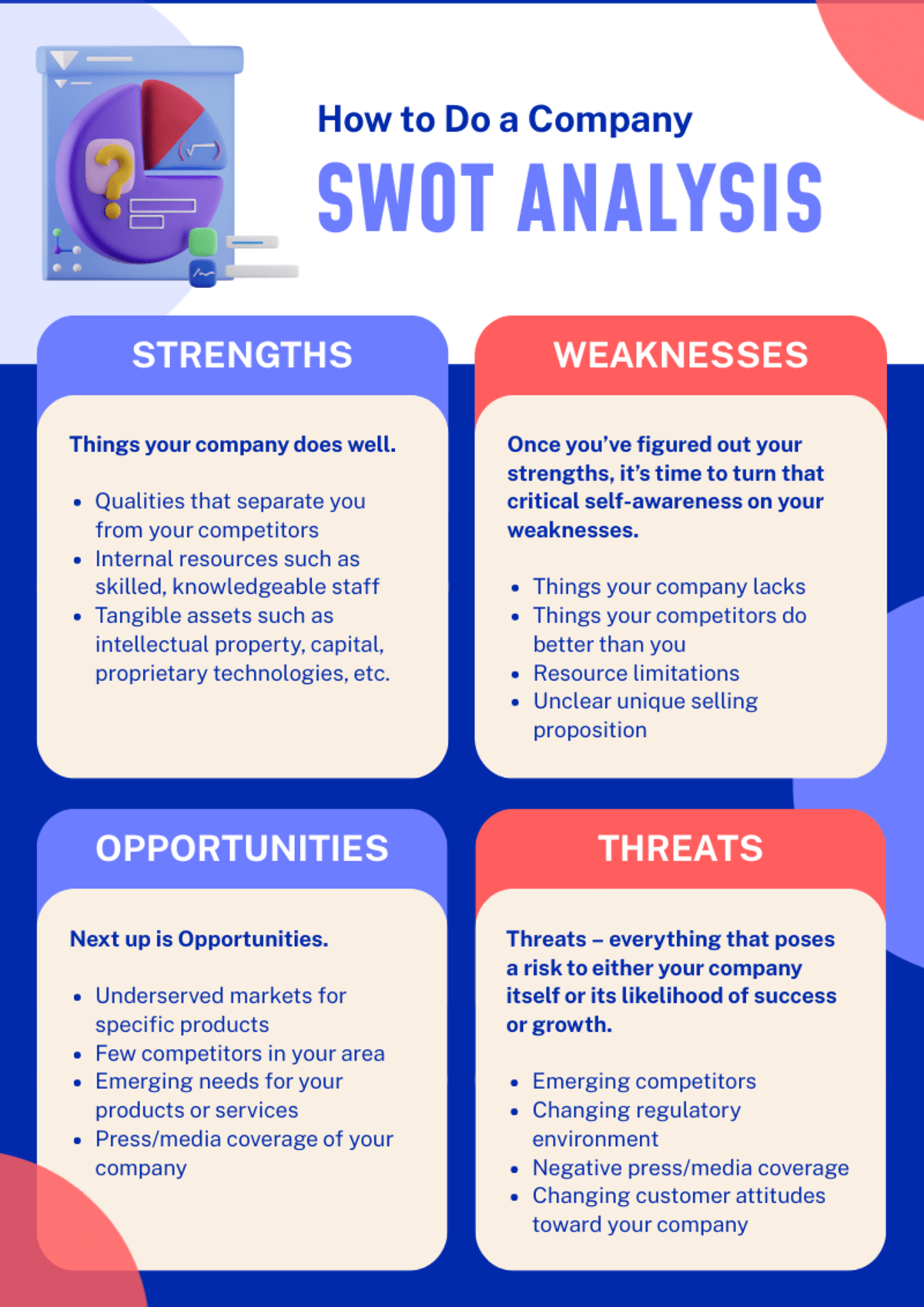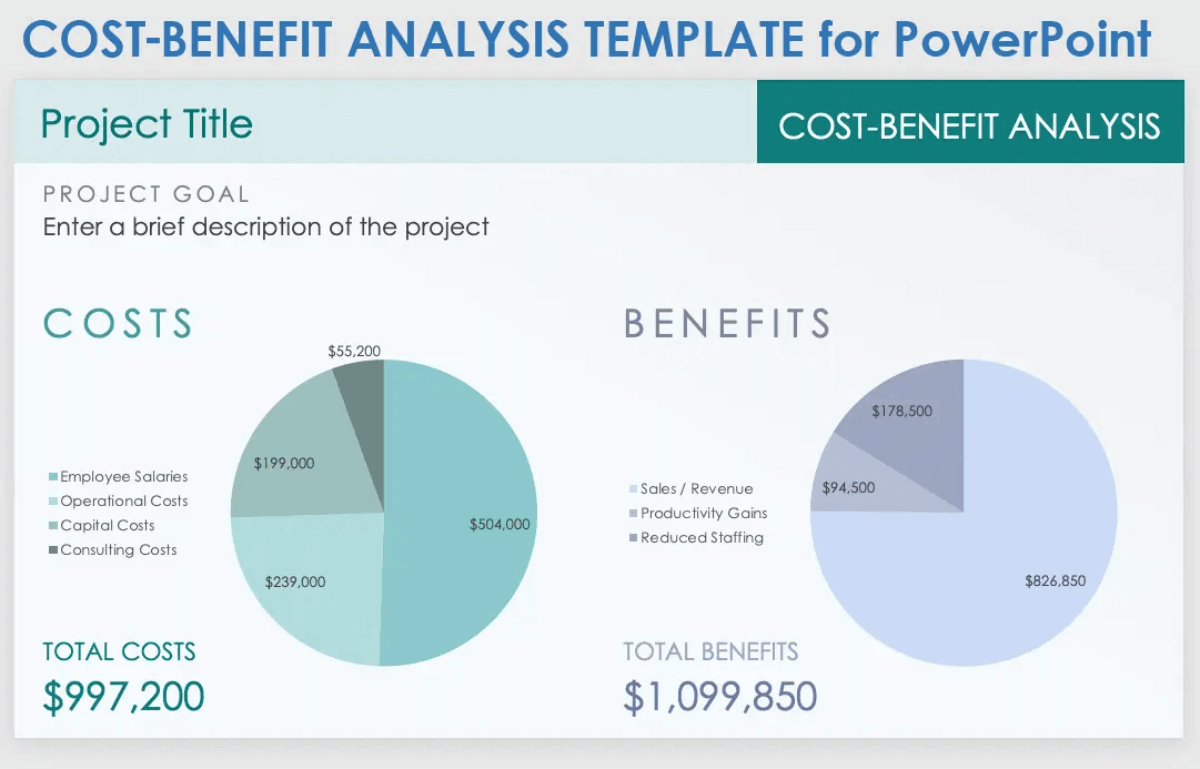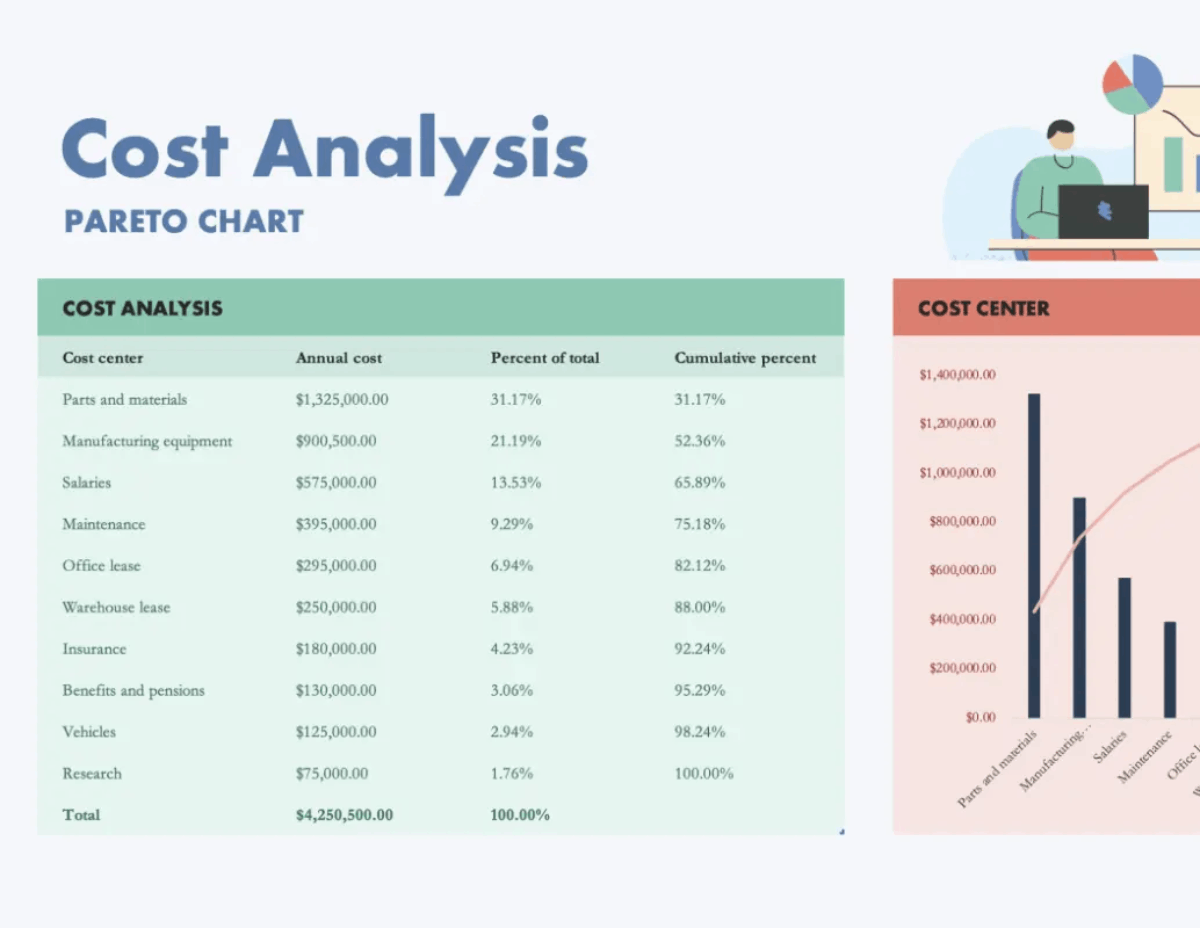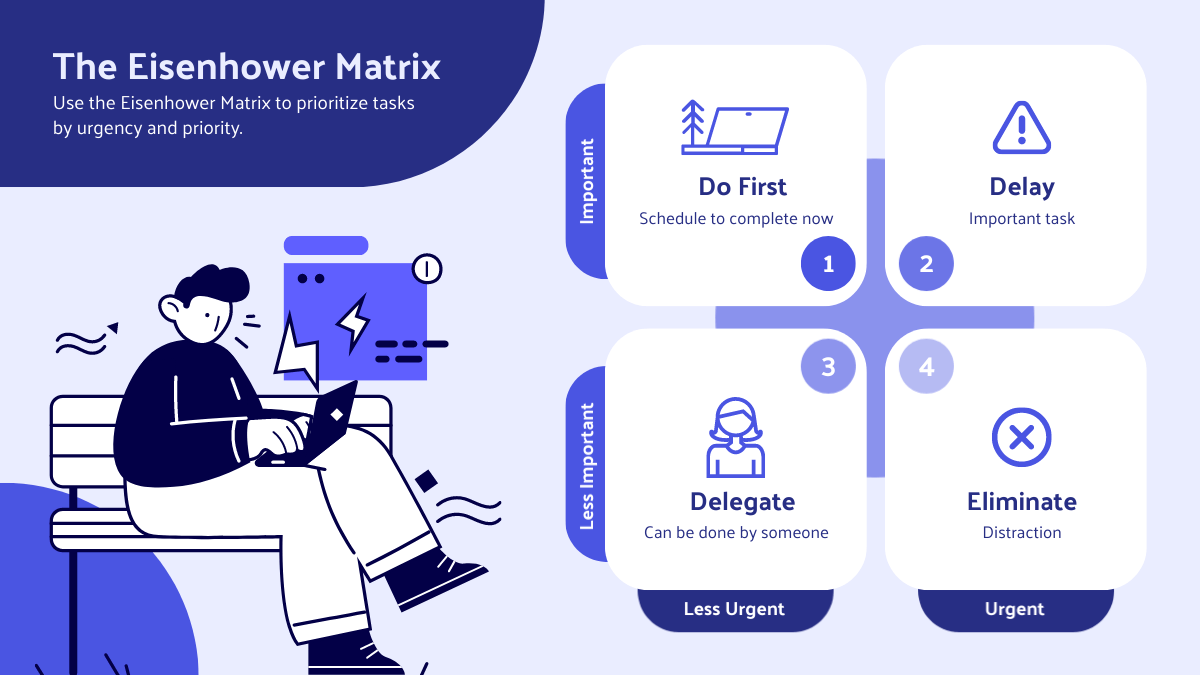Feeling the immense pressure of having to make a crucial business decision that will likely impact the entire organization? You are not alone.
Business leaders today face increasingly complex choices in running a business. The decision-making process is made difficult by the massive amounts of data, the involvement of numerous stakeholders, and the intricacies of various scenarios, among other factors. Furthermore, the weight of the potential consequences of a wrong decision adds significant pressure to this already challenging process.
To ease the burden placed upon them, decision-makers can leverage mental techniques and frameworks that help visualize data and guide complex decisions.In this article, we delve deep into the crucial role of decision tools in business, providing you a solid guide on how to leverage them to achieve success. We also go through the top visual tools to make better decisions and free templates you can customize at Piktochart.
Why Decision-Making Skills, Techniques, and Tools are Essential for Business Success
According to a Gartner survey, 65% of decisions made today are more complex compared with those made in previous years, primarily because they involve more stakeholders and choices. Without a structured system and the use of effective tools, decision-making processes become unsustainable.
When we talk about decision-making tools, we don’t mean digital apps or software. We’re talking about techniques and frameworks that help business decision-makers make a decision that is data-driven and strategic. You’re probably already familiar with some of these tools, such as SWOT analysis, decision matrix, feasibility report, and other reporting tools. These tools are used across industries like finance, consulting, healthcare, manufacturing, IT, and marketing.
By relying on hard facts and data rather than on hunches or subjective opinions, these tools eliminate bias and enable objective decision-making. With more structured evaluations of feasible options, the tools also save time and allow business leaders to respond to critical situations faster.
Over time, the use of decision-making tools helps you become more adept at problem-solving. You can easily determine which tool or diagram to use for which particular scenario and then identify the most advantageous course of action.
Key Steps in the Decision Making Process
Because outcomes depend on specific alternatives available, every decision making process is unique. But, generally, they follow five key phases. These phases provide a structured framework that ensures a comprehensive approach. For decision makers, understanding these key steps is vital to making decisions that lead to positive outcomes.
1. Determination of goals and options
The first part of decision-making involves determining the goals and the possible options to reach those goals. At this stage, brainstorming, setting SMART goals, and using SWOT analysis can be most useful. They allow you to set clear objectives and outline all the factors, both internal and external, that can impact your choices.
2. Data gathering and analysis
Once goals and options are clear, each alternative should be analyzed for the potential benefits and risks it brings. This analysis must be based on relevant data collected from reliable sources—a step that is crucial to ensuring a rational and informed choice. In some instances, PEST analysis can be used to understand the impact of external factors. This tool examines political, economic, social, and technological factors allowing businesses to anticipate potential opportunities and threats within and beyond their market.
3. Evaluation and selection
The next step is to determine the value of each option you have. Decision trees help you evaluate and compare alternatives to identify paths for every course of action. For decisions with financial implications, a cost-benefit analysis would be useful at this phase. To quantify the evaluation process, you may use weighted scoring methods like the decision matrix. After weighing the pros and cons list, determine which option aligns best with your goals.
4. Implementation of the decision
However sound your decision is, it won’t be as impactful without effective implementation. Based on your decision, develop a plan of action and allocate resources. You can use project plan templates like Gantt charts or project management software like Trello to plan and track your implementation.
5. Assessment of outcomes
To determine the real impact of your decision, you need to evaluate the outcomes. Gather reviews, assess performance metrics, and use feedback loops to gain insights. Gauge the success of your decision and take note of what could be applied to future decisions.
Take note that while we mentioned specific tools in each phase, many of these tools can be used in different stages of the decision-making process. In the next section, we go through some of the top visual decision-making tools that can be used in different scenarios. Most of these have templates that can be customized on Piktochart. By laying out factors that influence outcomes in graphical or logical formats, these tools enhance clarity and understanding.
Top Decision Making Tools and Techniques
Decision Trees
A decision tree helps simplify complex decision processes by breaking them down into smaller, more manageable parts. It helps visualize the ideal path to reach a goal by laying out the options you have and the potential outcomes of each.
As the name implies, imagine it as a tree with branches that continue to stem out individually too. The branches represent different paths ending in nodes that represent outcomes of choices made. A decision tree basically has three types of nodes:
- Decision nodes – possible actions or choices that can be taken
- Chance nodes – potential outcomes of decision nodes
- End nodes – final outcomes of the decision paths
Decision trees are ideal for making decisions and creating systems for:
- New projects and investments
- Strategic planning
- Risk management
- Disaster response
- Resource utilization
They are one of the most helpful tools for initiatives that have multiple possible outcomes.

To use a decision tree, follow these steps:
- State your main problem.
- List your options and set criteria for them.
- Create appropriate branches for the options.
- If needed, assign expected values for the potential outcomes.
- Review the tree and determine the best path to the outcome you want to achieve.
SWOT Analysis
Despite being developed half a century ago, the SWOT analysis remains a relevant decision-making technique. While some may view it as outdated, it remains an ubiquitous part of business decision-making processes with a recent survey showing that 1 in 2 respondents still use SWOT regularly and 78.6% consider it crucial for achieving long-term goals. This enduring popularity underscores its value in strategic planning and goal attainment.
SWOT analysis identifies an organization’s strengths, weaknesses, opportunities, and threats. By evaluating both internal and external factors, it allows for a comprehensive assessment of a decision’s viability. For example, a company considering market expansion can use SWOT to identify its competitive strengths, address internal weaknesses, seize market opportunities, and mitigate external threats. This holistic approach helps develop balanced strategies for business growth and other critical initiatives.
This decision-making tool is also simple to use. Create four grids–one each for S, W, O, and T. Then do the following:
- Identify internal and external factors that influence your decision.
- List them in the corresponding grids.
- Evaluate the significance and impact of each factor.
- Look at your strengths and how you can capitalize on the opportunities available.
- Strengthen your weaknesses and find ways to mitigate potential threats.
Based on these insights, you can improve your organization and refine your business strategies. Aside from making analysis pretty straightforward, SWOT analysis is versatile and can be applied in various contexts, even beyond business.

Cost-Benefit Analysis
For decisions with financial implications, include a cost-benefit analysis in your decision-making process. Unlike other decision-making tools, such as qualitative assessments or risk assessments alone, a cost-benefit analysis quantifies both the potential gains and expenses involved. This can help you prioritize options based on their financial impact. It not only helps determine whether an initiative is feasible and financially viable but also ensures that resources are allocated efficiently.
To apply this method:
- Identify the benefits of a project or decision.
- Identify the costs the project or decision will entail.
- Quantify all factors in terms of money.
- Calculate the potential ROI or predict future values.
- Compare the total costs with the projected benefits.

While cost-benefit analysis is often used for financial decisions, it can also be used to evaluate other aspects of business. For instance, it can be used to measure qualitative indicators like customer satisfaction, quality and time allocated for a service, environmental sustainability, and other potential impacts on business.
Pareto Analysis
This decision theory is based on the Pareto Principle, also called the 80/20 rule. Named after economist Vilfredo Pareto, the principle surmises that 80 percent of outcomes come from a mere 20 percent of the efforts. In decision-making, this principle can be used to prioritize actions that will yield the greatest positive impact. It can also be used to determine solutions to project delays, production issues, customer complaints, and other problems.
To use Pareto analysis for business decisions, gather relevant data and do the following:
- Clearly define the problem you need to address or the objective you wish to achieve.
- Identify the factors that impact decision-making and list them down.
- Quantify the factors in terms of cost, frequency, or impact.
- Construct a Pareto chart that plots the factors in descending order of their quantified impact.
- Analyze the chart and identify the top factors with the most impact.

Based on your analysis, prioritize actions that have a significant impact on your current situation. For this to be effective, we underscore the importance of gathering data to quantify the factors that influence your decision.
Eisenhower Decision Matrix
Another decision-making model that can help you prioritize tasks is the Eisenhower matrix which is particularly useful in deciding how to best allocate time and resources based on the urgency and importance of business initiatives.
Named after Dwight D. Eisenhower, this matrix was used by the renowned general and U.S. president in managing his decisions, both for military operations and presidential duties. By categorizing tasks based on two main criteria, he was able to prioritize critical initiatives in various scenarios.
The matrix consists of four quadrants with two main criteria: Urgent and Important. Urgent tasks require immediate attention, and Important tasks have a considerable effect on outcomes or long-term growth. To use the matrix, list all the tasks involved and categorize them in the appropriate quadrants.
- List important and urgent tasks in the first quadrant. These may include tasks that are near or past deadlines, emergencies, and critical issues.
- List important but not urgent tasks in the second quadrant. These include activities that must be done but can be scheduled at a later date.
- List not important but urgent tasks on the third quadrant. Although not significant to long-term outcomes, some tasks are necessary for business operations. These include routine administrative tasks, meetings, and other activities that can be delegated to other staff.
- List tasks that are not important and not urgent in the fourth quadrant. These tasks are not a priority. Some may even distract or deter you from resolving issues or achieving your objectives. In this case, they can be eliminated or removed from your list.
Tips for Effective Decision Making
Effective decision-making results in better outcomes. In fact, Deloitte insights show that companies with solid organizational decision-making are 1.3 times more likely to achieve their financial targets and 3 times more likely to develop products that disrupt markets.
To be effective, decision-making must follow a structured process that evaluates both short-term and long-term impacts. Here are some tips that can help you make strategically sound decisions.
- Clearly define your problems and objectives upfront. Ambiguous objectives can lead to misguided decisions. Make sure your goal is clear so each step of the management decision-making can be aligned with this goal.
- Involve key stakeholders in the process. Let’s say you’re developing a new product. Consider the different perspectives of product managers, engineers, marketers, and potential customers. Engineers can provide technical feasibility insights, marketers can offer market demand assessments, and potential customers can provide feedback on product features and usability. This collaborative effort ensures that the final product meets market needs and aligns with business goals.
- Conduct market research, collect information, or evaluate key metrics to gain data-based insights. Data will eliminate biases and help forge decisions that are objective and sound. If, for example, your goal is to expand your business, gather data on growth trends, consumer spending patterns, economic indicators, and other metrics relevant to the new market you are exploring.
- Evaluate the impact of decision options on short-term and long-term business outcomes. Consider future scenarios that may be affected or may affect your current decisions. For instance, when choosing between outsourcing production or expanding in-house facilities, assess cost implications, scalability, and market demand forecasts. Outsourcing may entail lower cost now but having your own facilities may be more cost-effective in the long run.
- Use flowcharts and decision-making tools for a more systematic and structured approach. By being methodical in your decision-making process, you reduce the chances of making the wrong decisions. For example, using a decision matrix to compare potential suppliers based on criteria like cost, quality, and reliability makes for a more thorough assessment. This aids in procuring the best possible options for your supply chain.
Make Business Decisions Based on Data-Driven Choices
Business leaders today can no longer rely on intuition or jump blindly into the unknown. Each decision must be based on data and guided by a well-thought strategy. Using decision-making tools is now necessary for making strategic, data-driven decisions.
To enable sound decision-making, adopt these tools in your organization. There are plenty of tools online you can use for free. You just need to determine which tool to use and in which scenario to use it. To visualize decision maps, Piktochart provides customizable decision-making templates that streamline the process, save time and enhance communication. These templates not only help in illustrating complex decisions clearly but also aid in aligning stakeholders around shared objectives.



